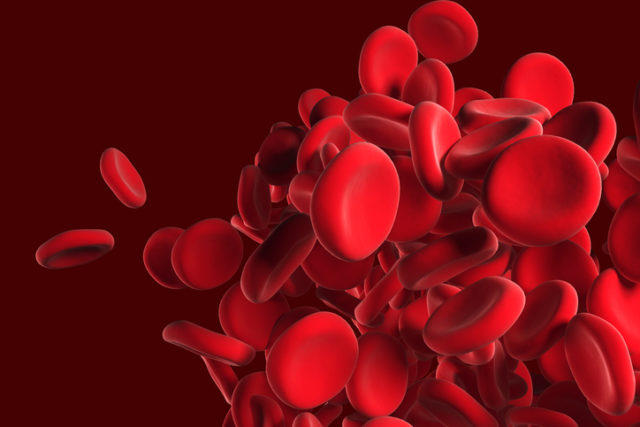
Roivant Sciences, a company that acquires overlooked or shelved drug assets from large pharmaceutical companies and forms subsidiaries to develop them, has launched its newest unit, a biotech that aims to turn an Eisai molecule into a new treatment for anemia caused by a rare type of blood cancer. Roivant says the new asset for its new subsidiary, Hemavant, has potential advantages over Bristol Myers Squibb medicines currently marketed for the indication.
The Hemavant drug is being developed as a treatment for patients with myelodysplastic syndrome, (MDS) a type of cancer in which the bone marrow produces abnormal blood cells. The low red blood cell levels that result cause anemia that leaves patients dependent on blood transfusions. The disease is thought to be caused by mutations that cause alterations in mRNA splicing, Roivant said in an investor presentation.
The first-line of treatments for MDS includes drugs that stimulate red blood cell production. But these therapies do not work in more than half of patients, Roivant said in the presentation. Low-risk MDS is one of the indications for the Bristol Myers Squibb cancer drug Revlimid. BMS also markets the Acceleron Pharma drug Reblozyl, which was approved in 2020 for treating low- to intermediate-risk MDS that unresponsive to the first-line of treatment. Roivant noted in its presentation that both BMS drugs are approved only for specific subsets of MDS patients, and they come with dangerous side effect risks.
Eisai had advanced its molecule, H3B-8800 (now renamed by Roivant as RVT-2001), to a Phase 1 study enrolling 84 patients, both high- and low-risk-MDS cases. Results published in 2019 showed that while the drug was safe and well tolerated, no patients showed a response to the treatment. However, reductions in red blood cell or platelet transfusions were observed in 12 patients.
Roivant focused on a subset of 19 low-risk, transfusion-dependent patients in the Eisai study who had previously been treated with Revlimid or other drugs to control gene expression. In these 19 patients, Roivant said that RVT-2001 led to a red blood cell transfusion independence rate of greater than 30%. In Phase 2 tests of Reblozyl, transfusion independence was observed in 13% of patients; for Revlimid, improvements in measures of red blood cells were observed in 12% of patients.
The caveat here is that these are small studies, and there have been no head-to-head tests comparing RVT-2001 to either Reblozyl or Revlimid. Nonetheless, Roivant sees in the Eisai drug the potential to offer a better treatment option for low-risk MDS patients who do not respond to first-line therapies. Last month, Roivant licensed global rights to the Eisai molecule; financial terms were not disclosed.
RVT-2001 is a small molecule designed to target SF3B1, a gene that is mutated in certain subsets of MDS patients. In lab and preclinical research, Roivant said that the drug corrected splicing defects caused by SF3B1 mutations in mRNA instructions that encode proteins thought to be associated with the development of MDS.
By focusing on patients whose disease is genetically defined by SF3B1, Roivant thinks it can achieve better clinical trial results than Eisai. An open-label expansion of the Phase 1/2 clinical trial is planned, but this time the study will selectively enroll patients who have that mutation. Those patients comprise estimated 30% of MDS cases, according to Roivant. The expansion of the Phase 1/2 study is set to begin in the first half of this year; preliminary data are expected in 2023, the company said.
Hemavant’s unveiling occurred during Roivant’s report of financial results for its fiscal third quarter of 2021. Roivant went public last year in a merger with a special purpose acquisition company. At the time, company executives explained how the biotech’s business model had expanded beyond acquiring drug assets and forming subsidiaries, which it calls “vants,” to advance them. Roivant’s computational drug discovery work is also producing internally developed drug assets.
“RVT-2001, the lead product candidate at Hemavant, is a great example of our plans for pipeline expansion, which will come from both in-licensing and from our internal computational discovery efforts,” Roivant CEO Matt Gline said in the announcement of the financial results.
Photo: virusowy, Getty Images








